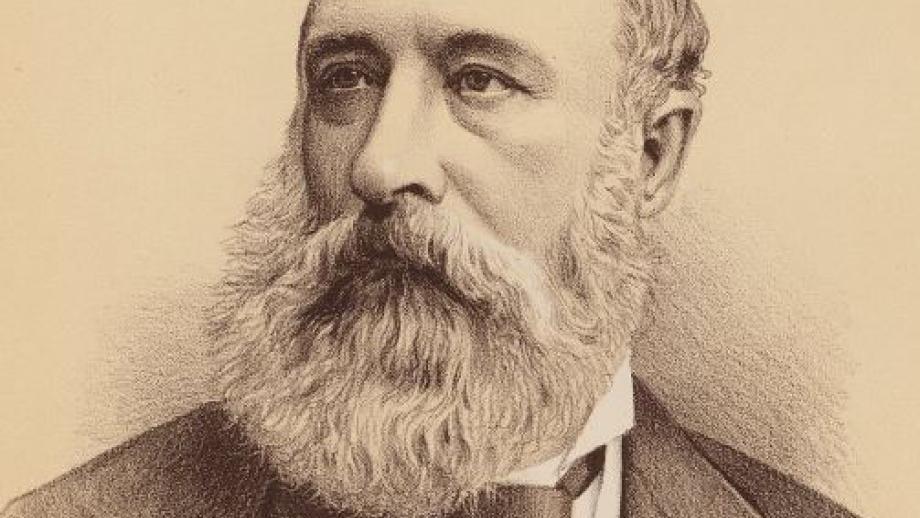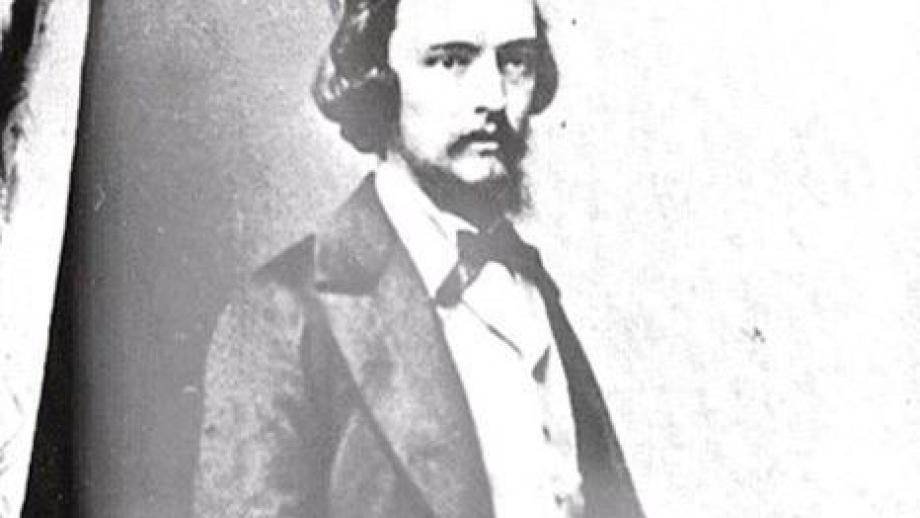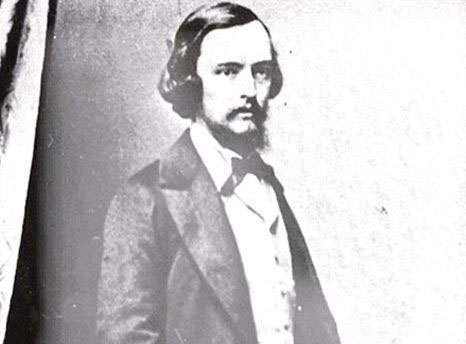Morris and Morrice
Arguably the most important member of any insurance company was its actuary. They determined the mortality tables which were so imperative to its success. With so little local data, Australian life offices largely relied on British data, which was not particularly comparable. Key to AMP’s early success was the appointment of two outstanding actuaries, Morris Birkbeck Pell and Morrice A. Black, the latter being transformative for the business.
American Morris Pell arrived in Sydney in 1852 to be the University of Sydney’s first Professor of Mathematics and Physics. In a coup for AMP, he also joined the Society as a part-time actuary. His specialty was the mathematics of life expectancy, and he took responsibility for calculating and dividing AMP’s profits between its members.
As AMP grew there was need for a full-time actuary. Henry Hawkins filled the role until ill-health forced his admittance to the Tarban Creek Asylum in 1867. With no suitable local replacement found, AMP looked to Britain and found Scottish actuary Morrice Black. Black’s work was described as giving AMP a broadness of view and an administrative capacity that was almost unique in the history of life offices (Woolmer, n.d.). In his first ten years as actuary, AMP moved from 35th in Australia to fourth and in 1873 its new business exceeded £1,000,000 for the first time.
Black was born in Aberdeen, Scotland in 1830. At age 16 he commenced work in the insurance industry and studying actuarial science, before relocating to London, where he attained several executive positions by the mid-1860s. He was elected an Associate of the Institute of Actuaries in 1855, before attaining fellowship in 1869. In 1868 Black was appointed actuary of the Australian Mutual Provident Society and he and his family relocated to Sydney. He was described as “a gentleman of great administrative capacity, enthusiastic in his profession and fertile in resources” (Woolmer, n.d.).
Black presented AMP’s statements and accounts more thoroughly than had ever previously been attempted. His first report included a review of the entire Society’s accounts since its establishment in 1849. He was also responsible for transforming the way AMP did business, finding its risk aversion and extreme caution unwarranted and unfeasible. AMP originally applied surcharges on policies for those working in certain professions including bakers, mariners, police officers, goldminers, railway guards, and millers and for any residents of Queensland. Black ensured these surcharges and restrictive clauses were removed and consequently AMP saw a sharp increase in customers. Black also spent considerable time analysing and improving the mortality tables used by the Society.
Black strongly disapproved of AMP’s existing methods of dividing and distributing profits and proposed a new method in which bonuses and profits would be distributed annually rather than every five years. After travelling to London and submitting his case for approval before a committee of English actuarial authorities, Black’s new system was approved and resulted in another increase in customers.
Black was born in Aberdeen, Scotland in 1830. At age 16 he commenced work in the insurance industry and studying actuarial science, before relocating to London, where he attained several executive positions by the mid-1860s. He was elected an Associate of the Institute of Actuaries in 1855, before attaining fellowship in 1869.
In 1868 Black was appointed actuary of the Australian Mutual Provident Society and he and his family relocated to Sydney. He was described as “a gentleman of great administrative capacity, enthusiastic in his profession and fertile in resources” (Woolmer, n.d.).
Black presented AMP’s statements and accounts more thoroughly than had ever previously been attempted. His first report included a review of the entire Society’s accounts since its establishment in 1849. He was also responsible for transforming the way AMP did business, finding its risk aversion and extreme caution unwarranted and unfeasible. AMP originally applied surcharges on policies for those working in certain professions including bakers, mariners, police officers, goldminers, railway guards, and millers and for any residents of Queensland. Black ensured these surcharges and restrictive clauses were removed and consequently AMP saw a sharp increase in customers. Black also spent considerable time analysing and improving the mortality tables used by the Society.
Black strongly disapproved of AMP’s existing methods of dividing and distributing profits and proposed a new method in which bonuses and profits would be distributed annually rather than every five years, putting him in conflict with Morris Pell. After travelling to London and submitting his case for approval before a committee of English actuarial authorities, Black’s new system was approved and resulted in another increase in customers.
Although secretary Alexander Ralston was technically the senior figure at AMP, it was Black who took charge of improving the business with his impressive depth of experience and eye for detail. This eye for detail detected clerical errors in the Society’s accounts, profit estimations and life expectancy calculations.
Towards the end of Black’s initial three-year contract, he sought a more senior role, and although he failed in attaining seniority over secretary Alexander Ralston, the board agreed to give them equal status.
In 1878 Black became a member of the Royal Society of New South Wales and in 1882 was appointed an Alderman of the Borough of Woollahra in Sydney’s Eastern Suburbs, a position he held until his death.
In the 1880s Black’s health began to decline and he died from Bright’s Disease, an inflammatory kidney disease now known as acute glomerular nephritis, in 1890. His grand home ‘Tivoli’ in Rose Bay was purchased by the Church of England and became Kambala Church of England Girls’ School.





